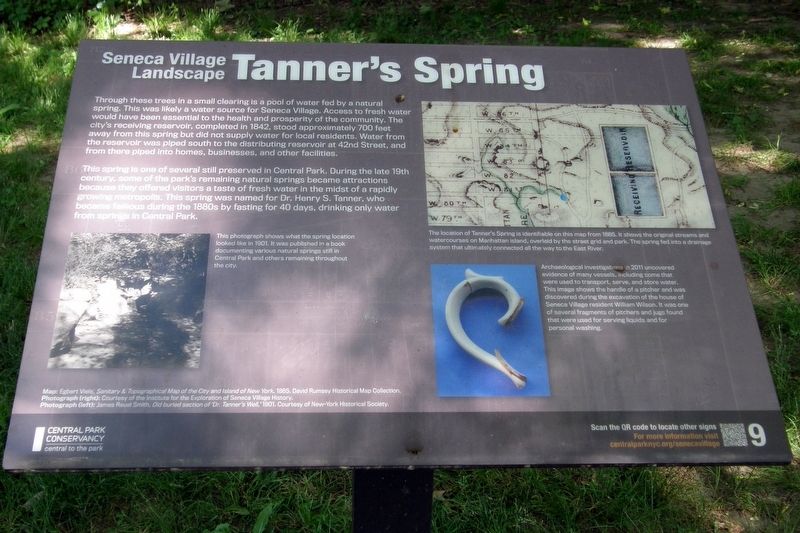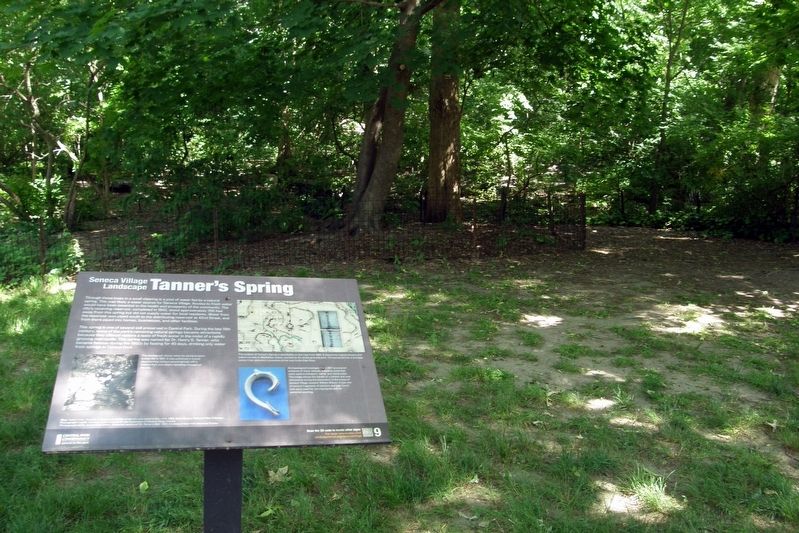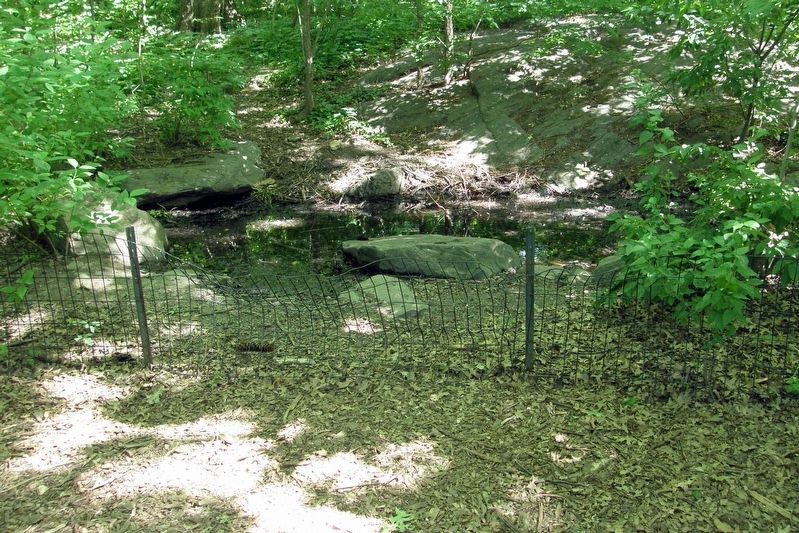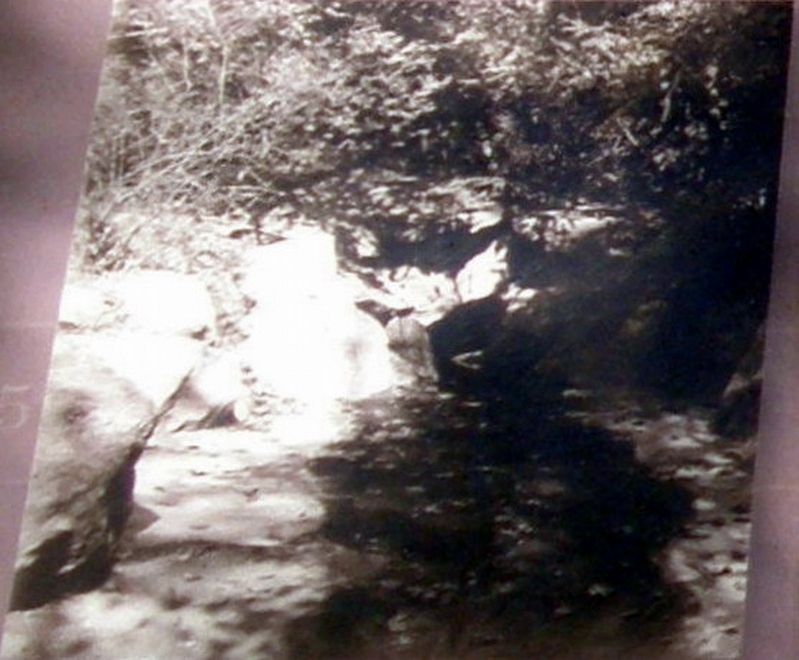Central Park West Historic District in Manhattan in New York County, New York — The American Northeast (Mid-Atlantic)
Tannerís Spring
Seneca Village Landscape
Through these trees in a small clearing is a pool of water fed by a natural spring. This was likely a water source for Seneca Village. Access to fresh water would have been essential to the health and prosperity of the community. The cityís receiving reservoir, completed in 1842, stood approximately 700 feet away from this spring but did not supply water for local residents. Water from the reservoir was piped south to the distributing reservoir at 42nd Street, and form there piped into homes, businesses, and other facilities.
This spring is one of several still preserved in Central Park. During the late 19th century, some of the parkís remaining natural springs became attractions because they offered visitors a taste of fresh water in the midst of a rapidly growing metropolis. This spring was named for Dr. Henry S. Tanner, who became famous during the 1880s by fasting for 40 days, drinking only water from Central Park. Inset
Erected 2020 by Central Park Conservancy.
Topics. This historical marker is listed in these topic lists: Parks & Recreational Areas • Settlements & Settlers • Waterways & Vessels. A significant historical year for this entry is 1842.
Location. 40° 46.937′ N, 73° 58.184′ W. Marker is in Manhattan, New York , in New York County. It is in the Central Park West Historic District. Marker can be reached from West 82nd Street east of Central Park West. Touch for map. Marker is at or near this postal address: Central Park, New York NY 10024, United States of America. Touch for directions.
Other nearby markers. At least 8 other markers are within walking distance of this marker. Housing (within shouting distance of this marker); Lanes, Lots and Streets (about 300 feet away, measured in a direct line); Summit Rock (about 300 feet away); Discover Seneca Village (about 400 feet away); Irish Americans (about 500 feet away); Livelihoods (about 600 feet away); Receiving Reservoir (about 600 feet away); a different marker also named Discover Seneca Village (about 600 feet away). Touch for a list and map of all markers in Manhattan.
Also see . . .
1. Seneca Village. Wikipedia entry (Submitted on April 27, 2021, by Larry Gertner of New York, New York.)
2. Seneca Village Site. Central Park Conservancy website entry:
Links to several related sub-topics (Submitted on April 27, 2021, by Larry Gertner of New York, New York.)
3. Seneca Village, New York City. National Park Service entry (Submitted on April 27, 2021, by Larry Gertner of New York, New York.)
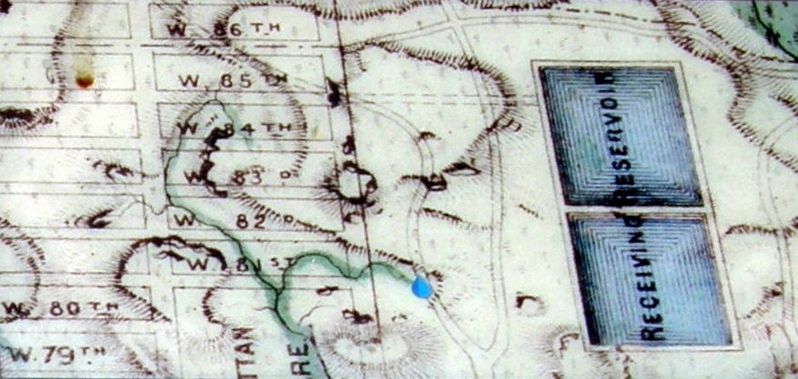
Photographed By Larry Gertner, June 17, 2020
5. Inset
The location of Tannerís Spring is identifiable on this map from 1865. It shows the original streams and watercourses on Manhattan island, overlaid by the street grid and park. The spring fed into a drainage system that ultimately connected all the way to the East River.
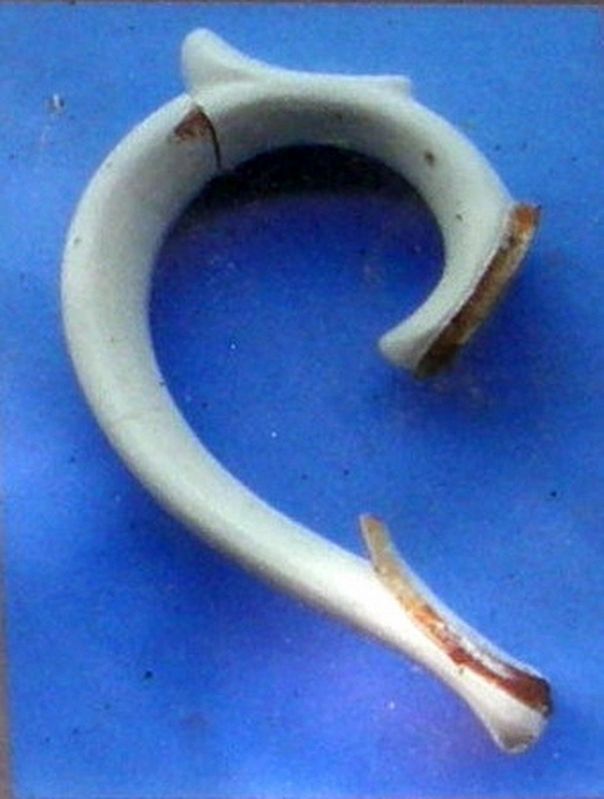
Photographed By Larry Gertner, June 17, 2020
6. Inset
Archeological investigations in 2011 uncovered evidence of many vessels, including some that were used to transport, serve, and store water. This image shows the handle of a pitcher and was discovered during excavation of the house of Seneca Village resident William Wilson. It was one of several fragments of pitchers and jugs found that were used for serving liquids and for personal washing.
Credits. This page was last revised on January 31, 2023. It was originally submitted on April 27, 2021, by Larry Gertner of New York, New York. This page has been viewed 375 times since then and 81 times this year. Photos: 1, 2, 3, 4, 5, 6. submitted on April 27, 2021, by Larry Gertner of New York, New York.
